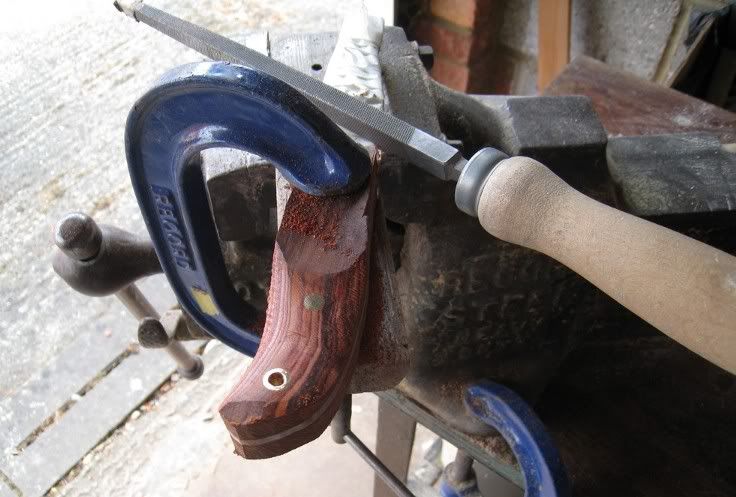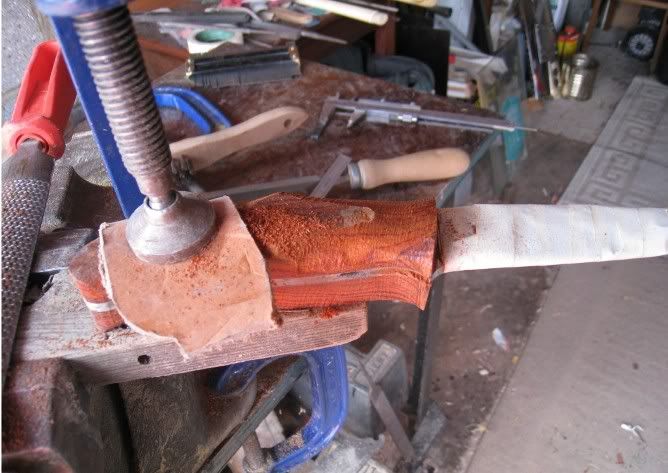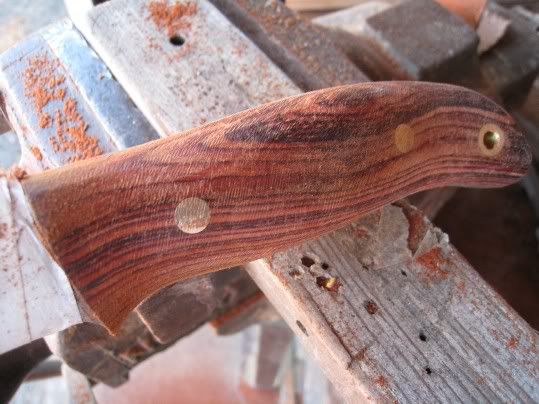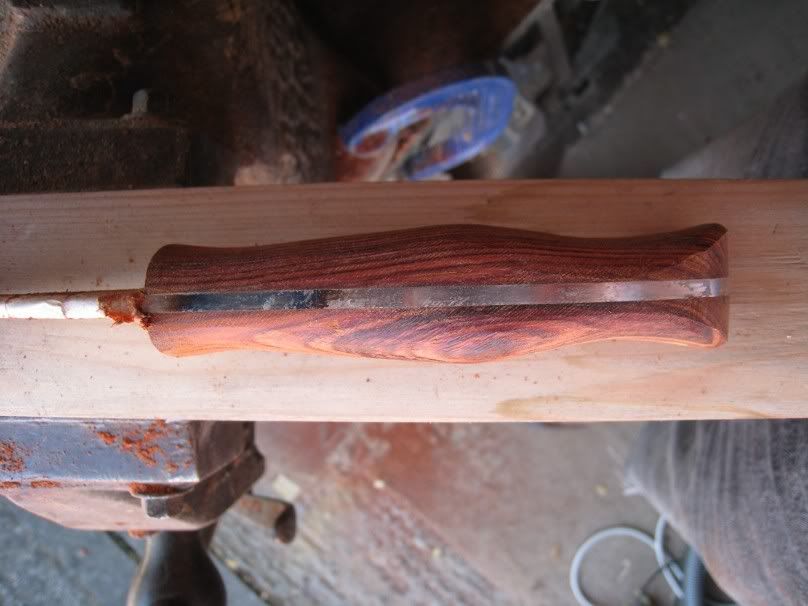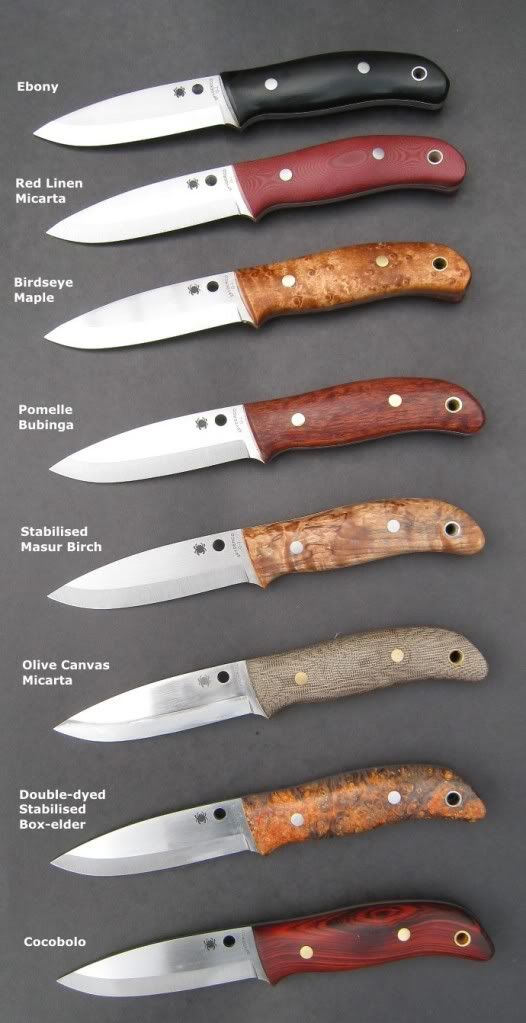Tools.
I don’t tend to use a belt sander for handle shaping but this is more to do with my grinder having only a 10” wheel. An 8” wheel would work much better for shaping this type of handle. All the work done on this handle can be done with a small selection of files. These are the ones I use:

¼ wide flat smooth cut, ¼ x 6”square bastard, 8” half round bastard, 10” square Bastard, 10” half round smooth, cabinet maker’s rasp, 12” flat bastard.
The two half round files could be done without by substituting dowels and good sandpaper. Nearly all the shaping is done with just the cabinet rasp and the 10” square bastard. The smaller files are handy in some tighter corners, the big flat is good for straightening a few lines and getting lumps out.
I find some things invaluable for measuring work as it goes.

A pin-gauge for keeping both sides of the handle the same shape is very handy. Vernier callipers (here shown with a temporary modification, on which more later) and a steel ruler (actually, a flexible 6” is better)
Lastly, I use a variety of backings for handle sanding. Here’s a picture although they won’t feature in any of the other pictures.

In addition to a couple of rectangular bits of hardwood and a couple of pipes, I planed down a bit of pine to approximate an 8” radius, handy for evening up some curves when used with 80grit paper. Some 8mm thick shoe leather makes a great flexible backing. The strange metal bar is a wedge from a defunct electric generator and is about a 6” radius.
The knife
The idea behind the handle on the Spyderco/BushcraftUK knife was to have a fairly broad but well sculpted and rounded handle which would spread the load from heavy wood cutting over a large area of the user’s hand.
Exact dimensions will vary depending on the user’s hand but for average hands a grip with a maximum palm swell of 1 inch seems to work well. If 3/8th Micarta is used, a couple of vulcanised fibre spacers can be used to bulk things out.
It is of great benefit to get the handle slabs to an equal and uniform thickness before attaching them to the knife. I used not to be too worried, but it makes keeping everything even so much easier later on that I now thing it worth the extra effort.
The project knife has cocobolo scales and is destined for someone with fairly large hands. The handle comes in at 27mm to start with.

The general vital statistics for desired handle width, from the blade are:
.85 = 21 – 22mm
0.75 = 19-20mm
1 = 25mm
0.7519-20mm
1 = 25mm
There are loads of ways of holding a handle to work on it. I have a solid vice and just use big G-clamps to hold it to an old bit of pine board. If the slabs are even it is simple, and much more solid, to clamp the handle for as much work as possible before swapping to clamping on the blade.

I start off with the cabinet rasp and take a big bite from between the lanyard tube and the rear bolt.

I use the edges of the rasp to allow me a deeper bite so that the thickness at the bottom of the cut is 23.5mm

Cont...
